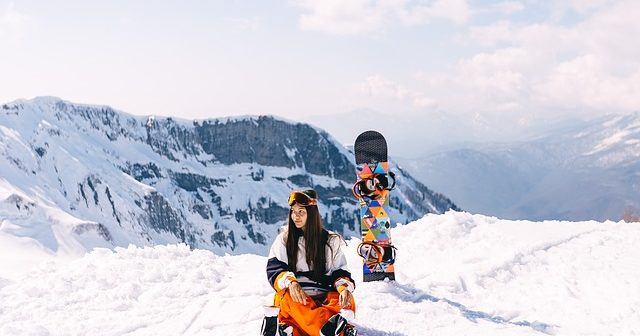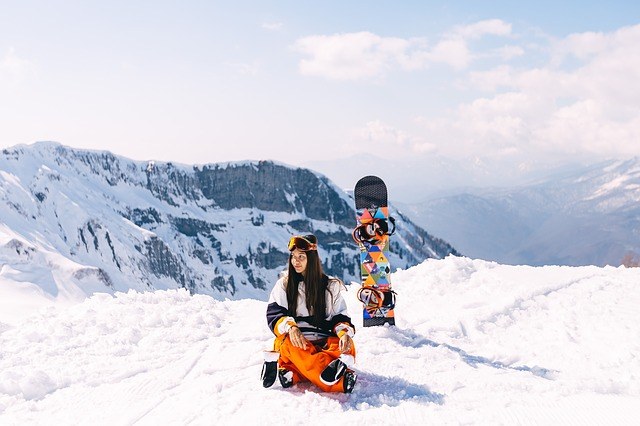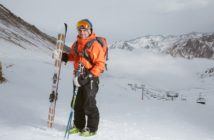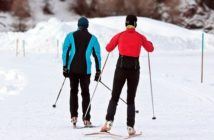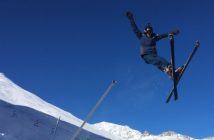Figuring out what kind of snowboard is right for you can be quite the hassle. There are so many different factors to consider, you may not know where to begin.
Even something as simple as a board’s overall stiffness (otherwise known as a snowboard’s flex) can impact the way you ride over snow.
Every snowboard brand has a unique flex rating system, each of which will differ from one another. Of course, this makes figuring out the best flex for you all the more difficult.
This is because a snowboard’s flex is determined by a wide number of variables, including camber, contact points, longitudinal flex, torsional flex, snowboard construction, the materials the snowboard is made of, and even the rider’s weight.
Adjusting even one of these seemingly small factors can change the way your board performs on certain terrains and in certain conditions.
So how do you figure out what board flex is right for you? This guide will go through what the general flex rating is, what types of snowboard flex there are, and even which kinds of boards are the best for different types of snowboarders.
Let’s dive in!
Contents
What Is The Snowboard Flex Rating?
Basically, a snowboard flex rating is a numbered system that ranks how flexible a snowboard is. Simple enough so far, right?
Each snowboard brand will have a different system based on their own criteria and standards for their boards.
Ultimately, however, flex is measured on a scale between 1 and 10, with 1 being on the softer side and 10 being the stiffest board there is for that brand.
Typically, the average flex rating system will have:
- A measurement of 1 to 2 for soft flex snowboards.
- A measurement of 3 to 4 for medium-to-soft flex snowboards.
- A measurement of 5 to 6 for medium flex boards.
- A measurement of 7 to 8 for medium-to-stiff flex boards.
- A measurement of 9 to 10 for stiff snowboards.
Other scales may translate:
- 1 to 2 for soft boards.
- 3 to 5 for medium boards.
- 6 to 8 for stiff boards.
- 9 to 10 for very stiff boards.
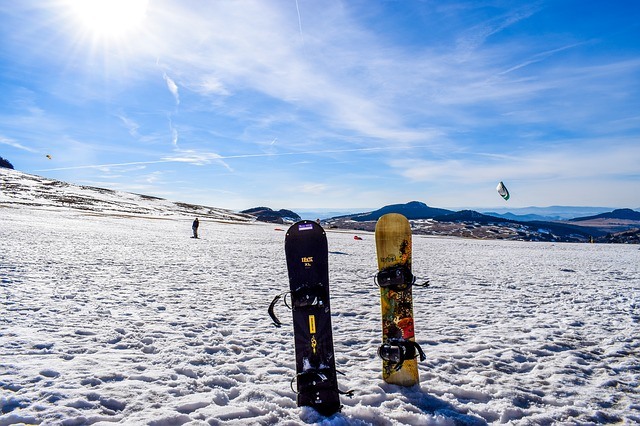
Most scales basically look the same, but you should still pay close attention to each brand’s flex rating system. Otherwise, you may end up buying a board that’s too soft or stiff than expected.
Determining Your Needed Snowboard Flex
But what is the difference between a soft board and stiff one? How do you know which snowboard flexibility is right for your skill level or snowboarding style?
The easiest way is to think of how quickly you want your board to turn while you shred down the slopes.
Naturally, your snowboard will be pulled straight downhill as fast as the added friction and gravity will let it. While skiers have the luxury of their poles to lift their skis off the snow and help them steer around, snowboarders must rely on their own bodies to do so.
This means that you need to twist your body in the direction you want to turn. Then, you’ll lean into that curve hard enough to make the edge bite into the snow and ice, forcing your board to turn.
Soft flex snowboards make it easier to bend your snowboard, as the material itself will be unable to offer much resistance. This results in a board that turns very quickly and very easily.
However, while an easy-to-maneuver board may sound like the best option, in reality, it all depends on your personal riding style.
For instance, imagine you are hurtling down a gigantic hill on a soft flex snowboard and bite hard into a corner. You may actually end up launching yourself into the air and tumbling painfully down the slope, instead of cutting through the curve.
Typically, figuring out the best flex for you all depends on your unique style, your skill level, and your own personal preference.
Often times, this means you should experiment with different flexes to see which one feels the smoothest or most responsive for you.
Soft
As noted above, softer snowboards are easy to maneuver. They can also make it simpler to press rails or load the tail for an ollie.
Since they are easy to manage at slower speeds and are far more forgiving of mistakes, softer boards are perfect for beginners of any age.
Most jib-specific models tend to have softer flexes as well, so keep this in mind when shopping around. If you’re curious why stiffer flexes aren’t available, be aware that the model type plays into this.
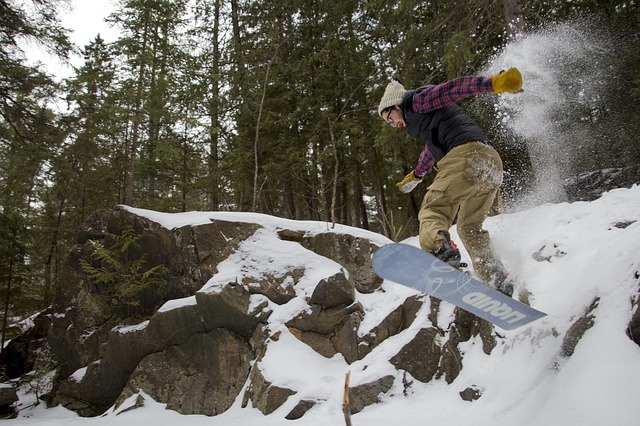
Medium
Whether you are a daring novice or a someone who is new to the sport entirely, you may want to start off with a medium flex board instead.
While soft boards are typically a beginner’s go-to flex, some novices may find that medium flex better suits their riding style.
Simple factors like your body weight, how willing you are to upgrade your flex right away, and personal riding preference will all play a role in your decision.
Some people find that they enjoy soft boards for certain styles of snowboarding, while others may prefer a medium flex board for the same activities.
You may also choose to alternate between the two, depending on the trip you have planned!
Stiff
Stiff boards offer users increased edge grip and better response, particularly at high speeds.
They can also absorb the heaviest of landings without buckling under you, making them far sturdier than soft or medium flex boards.
Stiff boards are usually favored by those looking to charge groomers or big powder lines. If you’re a novice just learning how to turn, or if you’re looking to perform low-speed tricks, then stiff boards may not suit you.
They aren’t as responsive to turns at slower speeds, nor are they particularly good fits for beginners.
Very Stiff
The stiffest snowboards are typically reserved for expert users who want a reliably stable ride, best suited for higher speeds and softer powder.
After all, you don’t want to execute a sudden, sharp turn in the backcountry or a double black diamond, only to find yourself splatting face-first into a huge pile of snow.
This video goes into more detail of snowboard flex.
Different Types of Snowboard Flex
Some brands or stores may not sell boards based on any of the above flex rating systems. Instead, they’ll categorize boards by their torsional flex and longitudinal flex.
These more technical ratings play into different aspects of a board’s overall flexibility.
As such, your local snowboard retailer or rental company can better understand the kind of snowboard you want – far more than the vague flex ratings given above.
Torsional Flex
Torsional flex is the type of flex measured in your board’s width, or from edge to edge.
Generally, most people do not consider this when deciding on what snowboard fits them best.
However, some argue that a softer torsional flex actually helps with sharper turns, while stiffer torsional flex increases edge-hold just as much as longitudinal flex.
Longitudinal Flex
Longitudinal flex is the flexibility of a snowboard’s length, or from nose to tail. When brands create a flex rating for their snowboards, they typically refer to a snowboard’s longitudinal flex.
Longitudinal flex can be either progressive or continuous. A progressive flex means that the flex is concentrated more in the center of the board, while the nose and tail could all have different levels of flex.
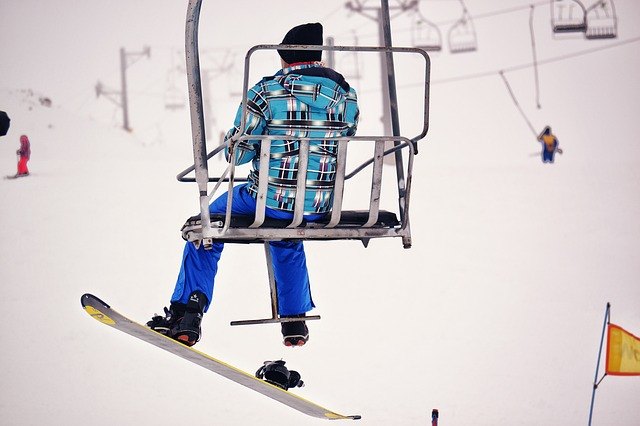
Some examples of a progressive flex snowboard include:
- A stiffer flex between the bindings, with the tip and tail being much softer.
- A softer flex between the bindings, with the tip and tail being stiffer.
- A stiffer flex in the tail and a softer flex in the nose (the reverse is not usually found, however).
A continuous flex is – as you may expect – a consistent flex level between the bindings, tip, and tail of the snowboard.
Both progressive and continuous snowboards will suit certain styles of snowboarding over others. Ultimately, it is up to personal taste. Don’t be afraid to experiment with different boards!
What is the Best Flex for Me?
Different flex ratings will suit different snowboarding styles. Keep that in mind before taking a softer flex board out to the backcountry or a stiff board to a freeride park.
With that said, there are certain snowboards that lend themselves to specific riding styles. If you know what you like, where you’re headed, and what to expect from your board, then browse through this selection. One of these types will fit the bill.
For All-Mountain Snowboards
All-mountain riders like to do a bit of everything, so naturally, they need a board that keeps up with their ever-changing tastes and can work well in nearly any conditions or terrain.
The majority of all-mountain snowboards will have a flex rating anywhere between 4 and 7, though some beginner all-mountain or all-mountain-freestyle boards will be softer. Their versatility makes them ideal for newbies who are still unsure of what flex they need.
All-mountain boards often lean toward those who like to freeride or freestyle snowboard. However, they can still be more or less aggressive depending on certain board factors.
The stiffer the all-mountain board is, the more aggressive it can be on the slopes. The binding types will also play a role, and your own experience will factor into how much effort a board requires.
For Freeride Snowboards
Freeride snowboards are typically reserved for more adventurous riders who shred down ungroomed, off-piste runs.
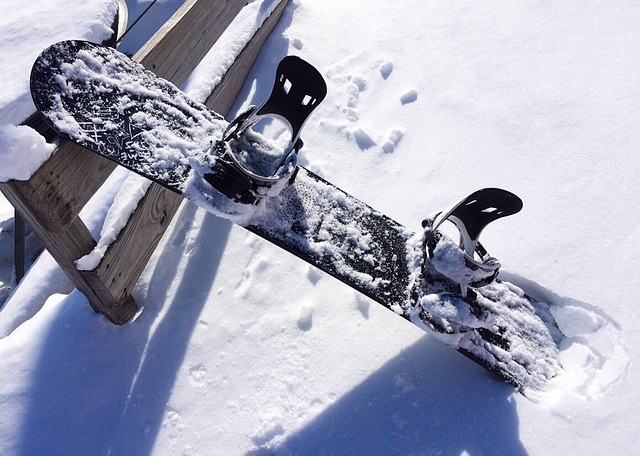
These are more directional boards, which means they’re designed to be ridden with one end always facing downhill.
Freeride snowboards usually have stiffer flexes than other kinds. Anywhere between a level of 6 to 10 should suffice.
For Freestyle and Park Snowboards
Freestyle and park riders will perform best with a soft flex snowboard.
Its effortless maneuverability allows for easier butters, presses, spins, and other ground tricks. As a plus, they’re far better on jibs than other types of boards.
Freestyle and park riders should also get a board with a continuous soft flex, rather than a progressive one. This ensures you can ride, land, take off, or press in any direction with relative ease.
Street boards (also known as urban, jib, or noodle boards) tend to be on the softer side – at anywhere from 1 to 2 on your average flex rating scale.
They perform very well with butters. However, they won’t take you very far from the park and they may not suit any bigger features.
If you’re after a freestyle board designed for bigger jumps, as well as casual rides around the resort, then get a board with a flex of anywhere between 3 to 6.
The softer flex allows for more buttering, jibbing, small jumps, and is more forgiving of those who are new to freestyle or park riding.
As a plus, the slight stiffness in a board within this flex range allows for greater air and pipe riding. It also works best for those who favor the jump line over the jib line.
For Beginner Snowboarders
Softer snowboards are easier to turn and more forgiving of mistakes a novice is bound to make. Beginners, riders with lower body weights, and park riders will all benefit from using a soft flex snowboard.
They tend to be a bit looser at higher speeds, but they can also provide a soft, buttery feel at less thrilling speeds. A freestyle or all-mountain snowboard will suit any beginner snowboarder just fine.
For Advanced Snowboarders
Stiff snowboards are usually built for those who love to freeride or go down the backcountry routes.
These boards work great for high speed turns at high slopes, but can be tough for lightweight riders or novices to flex properly.
Here’s a video with even more details on snowboard flexibility.
Conclusion
There are so many different factors to consider when picking out the right snowboard for you.
However, a snowboard’s flex is one of the most important, if not the most important, factor to really consider before buying or renting a snowboard.
Hopefully, this guide has helped give you a better idea what kind of snowboard flex to check out!
What’s your preferred snowboard flex?

